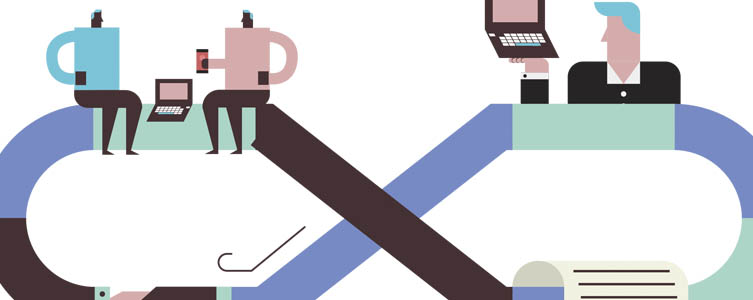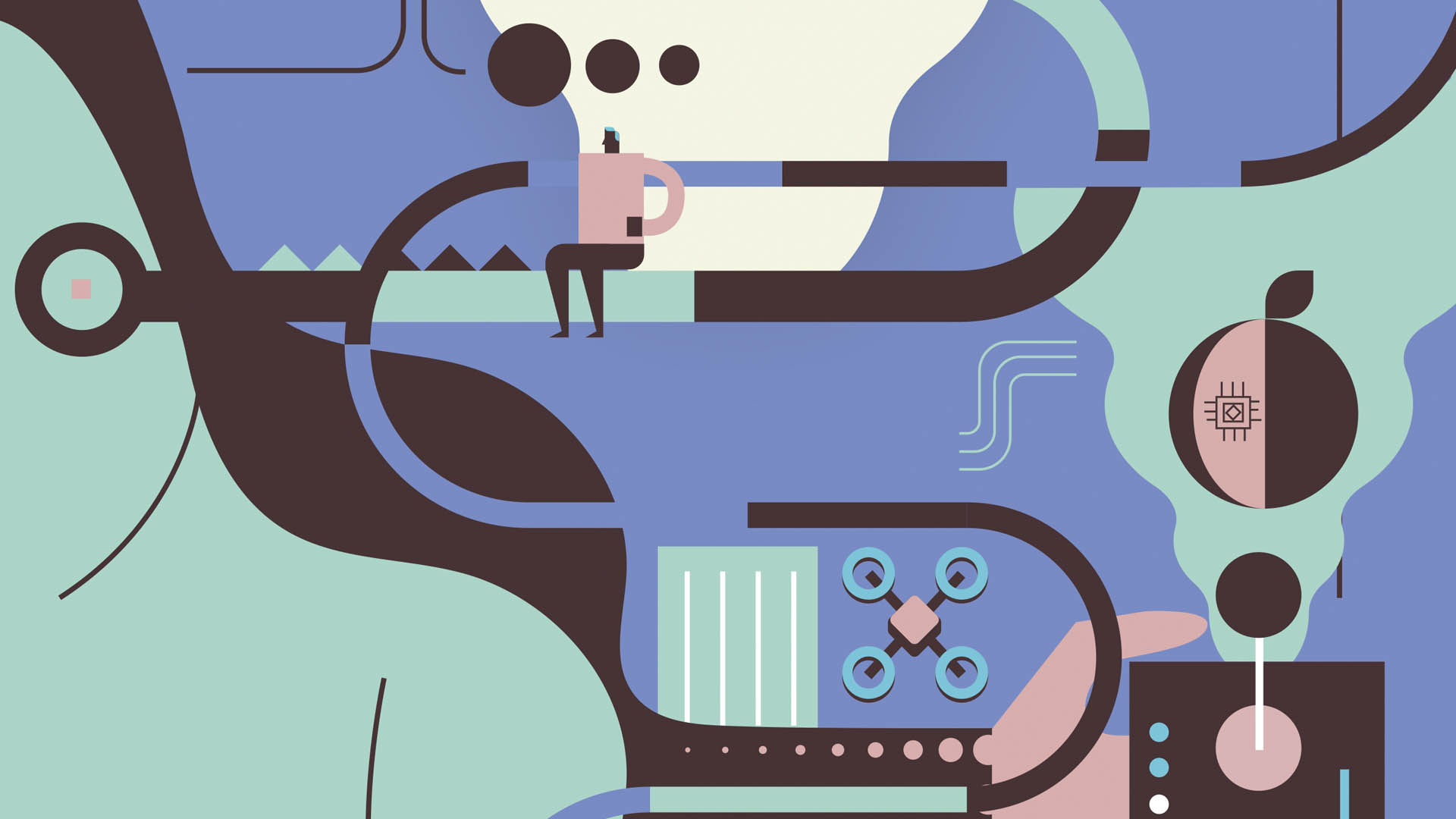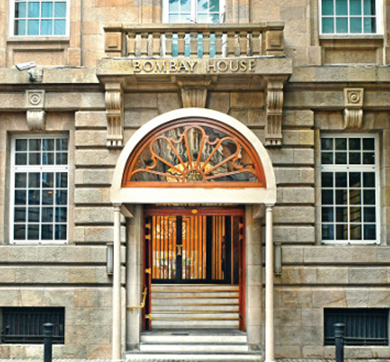June 2018 | 2,078 words | 8-minute read
The plot of the 2007 science fiction novel Halting State by Charles Stross is based on a rather interesting premise — a premise that, not surprisingly, sounded like science fiction in 2007, but with the pace of digital disruption, sounds rather close to reality in 2018. The story revolves around a bank robbery in a virtual world, but that’s not what’s relevant to my essay here.
The opening paragraph of the book describes an email from a recruitment agency to a computer science graduate working at a start-up. It roughly goes:
“Hello. We are Round Peg/Round Hole recruitment. We are not just another of those CV databases doing simple keyword matches for skills. We install deep neural networks in corporate environments and build virtual synthetic simulations of people like you, and our models predict with a scary level of accuracy when someone is ready for a change of job. We know, for instance, that your peers have gotten promotions and you haven’t. Our advanced text analytics of your email and chat messages tell us that you are rather dissatisfied with your current responsibilities. We think this is the right time to switch, and we have the right role ready for you at our client X.”
Of course, this sounds dystopian, and it’s meant to because Charles Stross is the kind of prescient writer who has a good sense for how technology will push the boundaries of ethics at workplaces. But here’s why I think this bit of near-future sci-fi is a provocative metaphor for thinking about the future of work in a world where digital technology is sprinting faster than culture and behaviours can catch up.
This problem of “catching up” is now well over a couple of decades old. How many of us realise that it’s been over a decade since the iPhone heralded the smartphone era? Itera, one that has not only transformed daily lives andbut most businesses, setting as well. The moment a customer got an internet connected to the handheld, high-powered computing device, it set in motion a period of consumer innovation that overtook enterprise innovation.
The first wave of workplace reimagination was simply a case of “let’s see what consumer technology is upto and apply that inside the workplace”.
Companies scrambled to launch mobile applications for their own employees and struggled to do so, dealing with complex legacy systems that didn’t like playing well with mobile devices. Enterprises wrongly believed that mobile-enabling processes will make organisations agile. They did not.
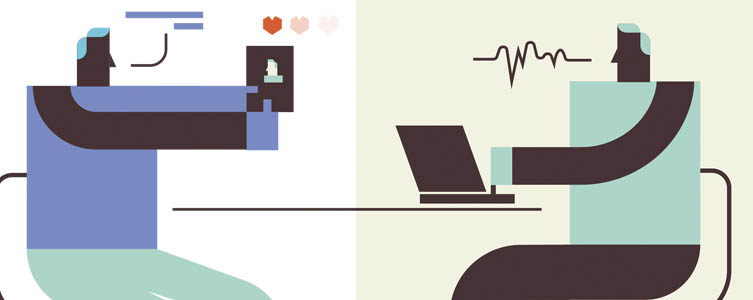
Organisations then made (and continue to make) massive investments in Big Data technologies like Hadoop only to realise that the behaviour of organisations was still centred around the rather productive use of Excel spreadsheets to analyse data.
Brands rushed to listen and respond to social media and turned their own internal communications into ‘Facebook-style’ streams, only to realise that social media is a double-edged sword —that is incredibly tricky to navigate and very hard to meaningfully engage in the long run.
But as with all things digital, the landscape started shifting while companies were still struggling to adopt these new and shiny toys. It turns out that this kind of window dressing, technology-first approach to transforming workplaces simply does not work.
It requires a more fundamental rearrangement of organisations’ DNA, and I want to lay down some broad principles that apply in most industries.
You can’t become an agile enterprise by investing in technological lipstick for processes that were designed in the past. We are regularly trying to put a digital face to an analogue way of working, but this will not work ining the future. Enterprises must go beyond just ‘simplifying’“simplifying” processes to completely reinventing them for the digital world. Let’s take two examples, one simple and another complex.
Let’s take two examples, one simple and another complex.
The simple example: Enterprises are making their email systems accessible on smartphones while the truly digitally savvy don’t use email at all anymore. They use conversational apps like Slack, WhatsApp and Facebook Messenger. Collaboration as a process is fundamentally broken in most enterprises;enterprises, and it needs a full rethink. Employees of the future will expect conversational systems to enable human-to-human, human-to-machine and machine-to-machine collaboration in the same, easy-to-use environment.
The complex example: Big-box retailers in North America are rushing to invest in robots for warehouses to not only cut personnel costs but also improve efficiencies. Many of them discovered rather late that they were missing a trick by not redesigning warehouses entirely to be optimised for robots! Warehouses were designed for human employees. They have neatly arranged shelves with products arranged by category. Robots do not need such arrangements because they can remember as much product location information as you want them to because it’s just another database entry for them. So, it turns out, that the true disruptive efficiency of using robots also requires a fundamental rethink of the entire work environment in that context. Organisations then made (and continue to make) massive investments in Big Data technologies like Hadoop only to realise that the behaviour of organisations was still centred around the rather productive use of Excel spreadsheets to analyse data.
Brands rushed to listen and respond to social media and turned their own internal communications into ‘Facebook-style’“Facebook-style” streams, only to realise that social media is a double-edged sword —that is incredibly tricky to navigate and very hard to meaningfully engage in the long run.
But as with all things digital, the landscape started shifting while companies were still struggling to adopt these new and shiny toys. It turns out that this kind of window dressing, technology-first approach to transforming workplaces simply does not work.
It requires a more fundamental rearrangement of organisations’ DNA, and I want to lay down some broad principles that apply in most industries.
You can’t become an agile enterprise by investing in technological lipstick for processes that were designed in the past. We are regularly trying to put a digital face to an analogue way of working, but this will not work ining the future. Enterprises must go beyond just ‘simplifying’“simplifying” processes to completely reinventing them for the digital world. Let’s take two examples, one simple and another complex.
Embrace Agile BizDevOps that extend all the way
The idea of agile development, which focuses on building small, minimum viable products in a fast and iterative manner with high degrees of uncertainty in requirements, has historically been an rather IT-centric phenomenon. But we are seeing the early stages of a Bimodal structure towards a more “schizophrenic” organisation where IT and business have varying rates of “agile”“Agile” transformation across different kinds of projects.
The key to success here is being able to stop keeping “legacy”the “Legacy” and “agile”“Agile” in entirely separate silos. Some of the smartest companies in the world are implementing a two-speed model as opposed to a single agileAgile model where even legacy processes have adopted DevOps style operations when it comes to delivering small, incremental value to business.
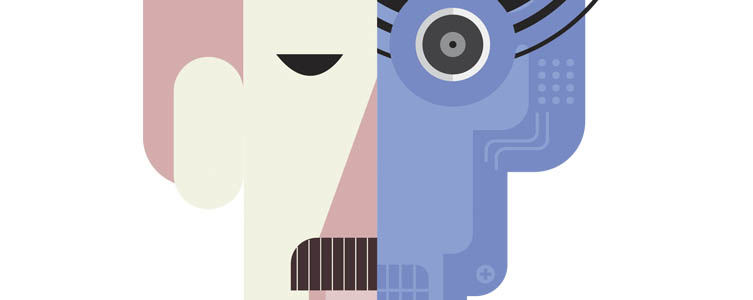
Say hello, to your AI collleagues
We are on the cusp of the personalised artificial intelligenceArtificial Intelligence (AI) revolution within the enterprise. Just take a moment to look at the consumer world today.
Facebook Jarvis, Google Home, and Amazon Echo: Personal AI assistants are becomingstarting to become commonplace. These understand voice commands, natural language and can followtake care of simple instructions (like booking an Uber).
Autonomous Uber and Waymo cabs (under pilot in several American cities now): These are still very early stage, but there is no doubt that many jobs will disappear because of autonomous technology and basic robotics.
AI will be the glue that holds the future organisation together. Employees still do way too many simple, repetitive, automatable tasks like data collection, testing, infrastructure monitoring, etc. These will be automated in the very near future. A good rule of thumb to predict what will get automated and what will not be is: “Only design and empathy will remain human. For the rest, there will be algorithms”.
Of course, this will happen over a longer period, but organisations need to start planning what workforce skills will remain core and relevant to them. The employees of the future will be multi-skilled, interdisciplinary and be able to collaborate with AI to do their jobs effectively. Specialists will be required for fewer and fewer tasks while generalists will start to become indispensable.
Predicting the future
So, what will a workplace of the future look and feel like?
In this world of hyperfast technological change, making predictions is the surest way to look foolish. The internet is littered with prognostications of futurists who have been getting it wrong since the iPhone was launched. But let’s take a crack at it anyway.
- The concept of a workplace will become more abstract and constitute both a ph ysical and virtual entity. Even right now, the individual employee, armed with smartphones and high-speed internet connections and access to enterprise apps, is already a walking, moving and driving workplace.
- We are now starting to see a convergence of physical and digital workplaces that is expected to accelerate in the next few years driven by the explosion of more advanced augmented, virtual and mixed reality technologies along with AI.
- A truly connected, collaborative and immersive workplace will be accessible from anywhere, at anytime. (office/non-office location).
- Social collaboration will be the foundation for enabling connections between employees and chatbots.
- Employees’ interactions with technology through multiple applications today will slowly be replaced by AI-powered emotive and engaging conversational bots (visual and voice augmented) that act as digital personal assistants, removing technology from the active attention of employees and making it simpler and more efficient for them to focus on work.
- Policies and proactive interventions from HR will be driven by real-time insights generated from human-cloud analysis of social and conversational data (not too different from the job offer our CS graduate received at the start of this essay) that reflect the sentiment of employees better than periodic surveys.
- The workplace will provide more control to employees and empower them to contribute their best by a combination of quantified self (measure of where they stand), gamification (to inject a sense of purpose and emotional drive) and persuasive design (to constantly nudge them to perform better).
- Workplaces will use unobtrusive and non-invasive sensors (both digital and physical sensors) to track real-time performance and give feedback.
- The use of gamification to make it fun for employees to both follow and reinvent processes and procedures will transform organisational change management.
- Constant data-driven nudging through context-aware actionable notifications will let employees learn, collaborate and reinvent themselves continuously.on a continuous basis.
- Corporate learning will be more personalised and gamified. Games will replace some of the traditional forms of content to make learning more fun and engaging. Training through virtual reality will be the norm.
- Organisations with a strong culture of sharing of cognitive surplus, assets and resources will succeed. Internal, virtual marketplaces will help utilise resources (talent, physical assets and digital assets) more efficiently and effectively.
We are already seeing a convergence of physical and digital workplaces, and this is expected to accelerate in the next few years driven by the explosion of more advanced augmented, virtual and mixed reality technologies along with AI. And organisations with a strong culture of sharing of cognitive surplus, assets and resources will succeed.
Author Ashok Krish is the head of Digital Workplace practice at Tata Consultancy Services. You can follow him on Twitter at @krishashok
